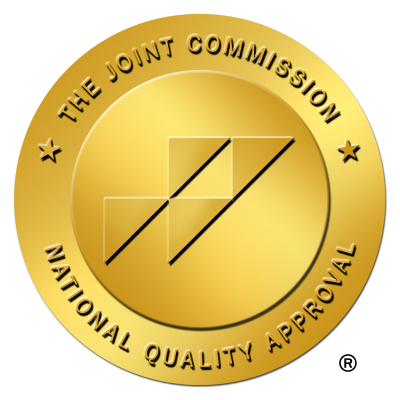Understanding the Overlap Between ADHD and Addiction

Exploring the Intricate Connection Between ADHD and Addiction
Attention Deficit Hyperactivity Disorder (ADHD) and addiction frequently co-occur, creating a complex clinical challenge that requires nuanced understanding. This article delves into the neurobiological, psychological, and developmental overlap between these conditions, aiming to shed light on shared mechanisms, risk factors, and effective management strategies. As research advances, it becomes increasingly clear that addressing both disorders simultaneously offers the best chance for improved outcomes, emphasizing the importance of awareness, early intervention, and tailored treatment approaches.
Prevalence and Developmental Course of ADHD and Substance Use Disorders
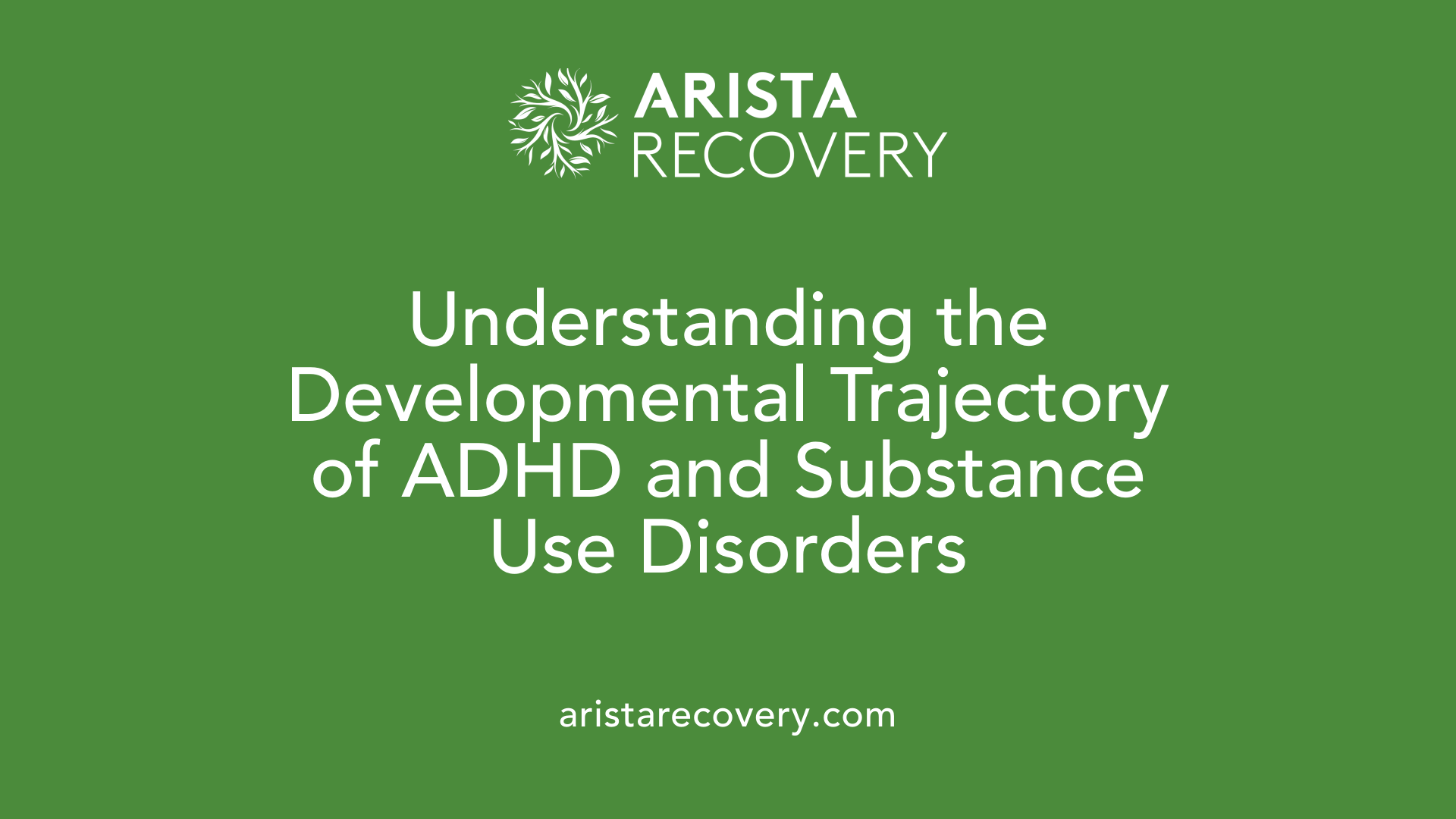 ADHD affects approximately 6 to 9% of children and adolescents worldwide and up to 5% of adults. These symptoms, including inattention, hyperactivity, and impulsivity, often persist into adulthood—longitudinal studies suggest that around 75% of childhood ADHD cases continue into adolescence, and about half into adulthood.
ADHD affects approximately 6 to 9% of children and adolescents worldwide and up to 5% of adults. These symptoms, including inattention, hyperactivity, and impulsivity, often persist into adulthood—longitudinal studies suggest that around 75% of childhood ADHD cases continue into adolescence, and about half into adulthood.
Substance use disorders (SUD), which typically begin during adolescence or early adulthood, affect between 8.9% of teenagers and 10-30% of adults in the U.S. These disorders involve the compulsive use of substances like alcohol, nicotine, cannabis, and stimulants, often leading to health, social, and legal problems.
Research shows a strong link between ADHD and addiction. Children diagnosed with ADHD are more likely to experiment with alcohol and drugs early and are at increased risk for developing SUD later in life. Approximately one quarter of adults with SUD and one half of adolescents with SUD are diagnosed with ADHD through structured interviews. This overlap is partly due to shared neurobiology involving dysfunctional dopamine pathways, which influence impulsivity, reward sensitivity, and self-regulation.
The risk of addiction is further heightened when ADHD coexists with conduct or bipolar disorders. Such comorbidities often result in more severe outcomes regarding substance misuse. Long-term data indicates that childhood ADHD is a predictor for the initiation of cigarette smoking and substance use disorders in adolescence and adulthood.
Early treatment with stimulants, properly managed, may delay or reduce the onset of SUD and nicotine dependence, although this protective effect may decline in adulthood. Overall, understanding the developmental trajectory of ADHD and its intersection with SUD underscores the importance of early diagnosis and comprehensive treatment strategies to improve long-term outcomes.
Symptom Overlap and Developmental Trajectories

What are the common symptoms and developmental aspects of ADHD and addiction?
ADHD and addiction often exhibit overlapping symptoms such as impulsivity, difficulty paying attention, hyperactivity, and behavioral problems. These traits can begin in childhood and often persist into adulthood, affecting daily functioning and relationships.
Both conditions are influenced by a combination of genetic and environmental factors. Family history of ADHD or substance use increases susceptibility, while prenatal exposure to toxins or traumatic experiences also contribute to their development.
Children with ADHD frequently turn to substances like alcohol or drugs as a form of self-medication, seeking relief from mood disturbances or sleep issues related to their symptoms. This behavior raises the risk for later substance use disorder (SUD). Research indicates that untreated ADHD can lead to earlier initiation of smoking, alcohol, and drug use, with a significant percentage of adolescents and adults with ADHD developing SUD.
The co-occurrence of ADHD and addiction typically results in more severe impairments, including higher rates of hospitalization, mental health issues, and risky behaviors. Traits such as impulsivity and reward-seeking are central to both conditions. Individuals with these personality characteristics tend to seek novel experiences and have difficulty delaying gratification, making them more vulnerable to addictive behaviors.
Understanding these shared features underscores the importance of integrated treatment approaches. Managing both ADHD and addiction involves behavioral therapies, appropriate medication, and supportive interventions aimed at reducing impulsivity and improving self-control.
More about development and symptom overlap
| Aspect | Description | Additional Notes |
|---|---|---|
| Duration | Symptoms can persist from childhood into adult life | Longitudinal studies show high persistence rates |
| Genetics | Shared genetic factors increase risks | Family history is a strong predictor |
| Environmental Factors | Prenatal exposures, trauma, and social influences | These factors can trigger or exacerbate symptoms |
| Traits | Impulsivity, reward-seeking, sensation seeking | Traits influence both ADHD and addictive behaviors |
| Impact | Co-occurring conditions lead to more serious outcomes | Increased hospitalization, mental health issues |
| Treatment Approach | Multimodal, focusing on both ADHD and SUD | Behavioral therapy, medications, support systems |
Neurobiological Underpinnings and Shared Brain Dysfunction
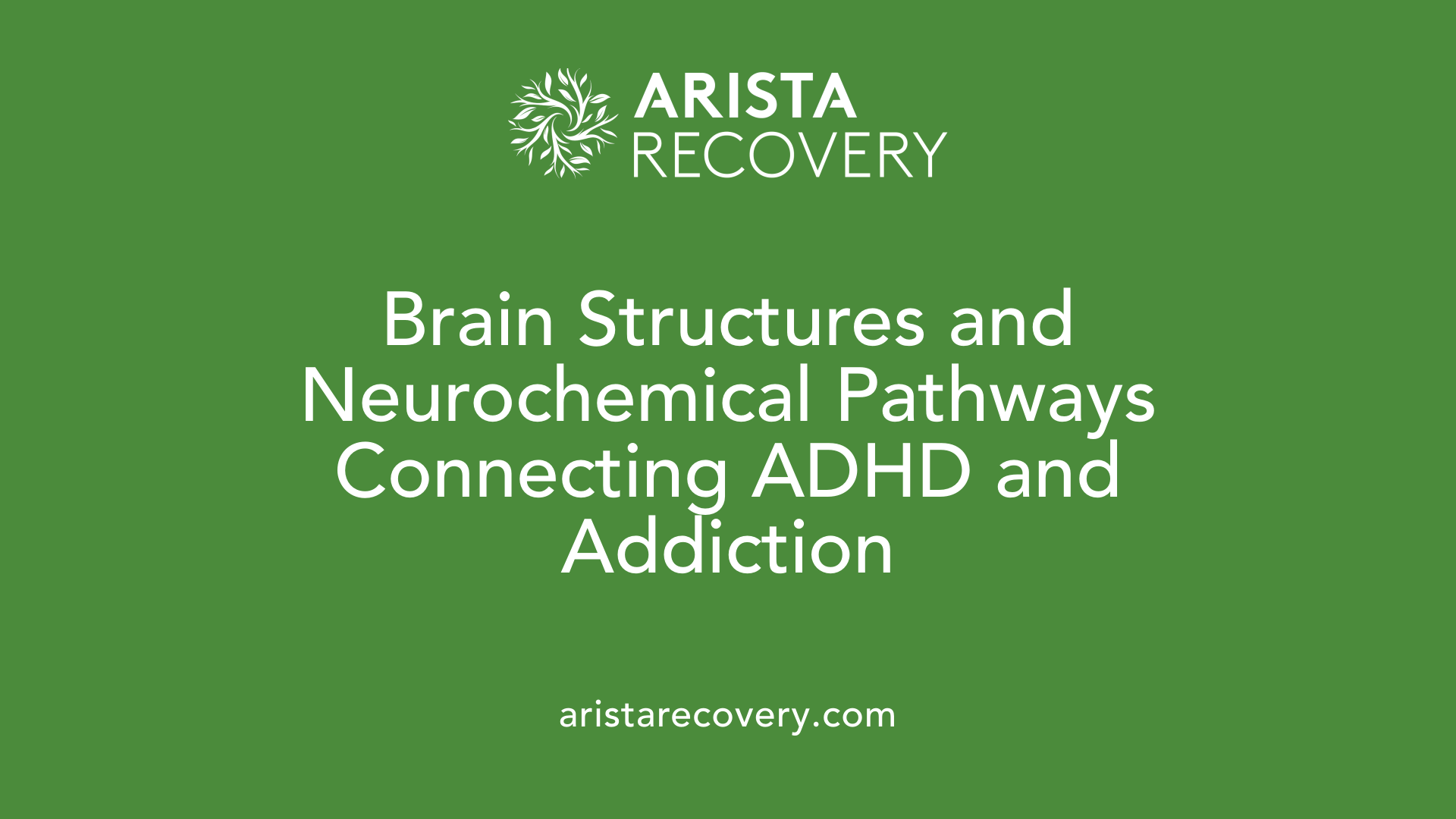
What is the relationship between ADHD and addiction?
Research consistently demonstrates that individuals with ADHD face a notably higher risk of developing substance use disorders (SUD), including alcohol, cannabis, nicotine, and stimulants. This increased vulnerability stems from shared neurobiological mechanisms, specifically involving dysfunctions in the brain's reward pathways and dopamine transmission. These neural irregularities contribute to impulsivity, reward-seeking behavior, and diminished control over impulses.
Key brain regions implicated in both conditions include the ventral tegmental area (VTA), nucleus accumbens, and prefrontal cortex. The VTA and nucleus accumbens form part of the mesolimbic dopamine system, which is central to the brain’s reward circuit. In individuals with ADHD and addiction, these pathways often exhibit altered dopamine activity, leading to impaired reward processing. This imbalance causes a blunted response to natural rewards and an increased drive for intense stimuli, such as drugs or risky behaviors.
Neurodevelopmental deficits in these dopamine pathways can predispose individuals to persistent impulsivity and difficulty delaying gratification. For example, decreased dopamine transmission in the prefrontal cortex impairs executive functions such as planning and decision-making, which are vital for resisting impulses and managing cravings.
Children with untreated ADHD may attempt to self-medicate using substances to counteract these reward deficiencies. While pharmacological treatment with stimulants does not seem to heighten addiction risk—in fact, early treatment can be protective—untreated symptoms often lead to risky behaviors, including early substance experimentation.
Overall, the neurobiology of ADHD and addiction is intertwined, characterized by dysfunctions in dopamine signaling and related brain regions. This overlap emphasizes the need for integrated treatment strategies that address both neurochemical imbalances and behavioral symptoms to improve long-term outcomes.
| Brain Regions Involved | Function in ADHD & Addiction | Impact of Dysfunctions |
|---|---|---|
| Ventral Tegmental Area (VTA) | Initiates dopamine release in reward pathways | Dysfunction leads to reduced reward sensitivity, impulsivity |
| Nucleus Accumbens | Mediates feelings of pleasure and reinforcement | Altered activity causes craving and compulsive seeking |
| Prefrontal Cortex | Governs executive functions and impulse control | Impairments result in poor decision-making, impulsivity |
Understanding how these regions and pathways interact provides insight into why ADHD and addiction frequently co-occur and highlights targets for potential therapeutic interventions.
Genetic, Environmental, and Psychological Risk Factors
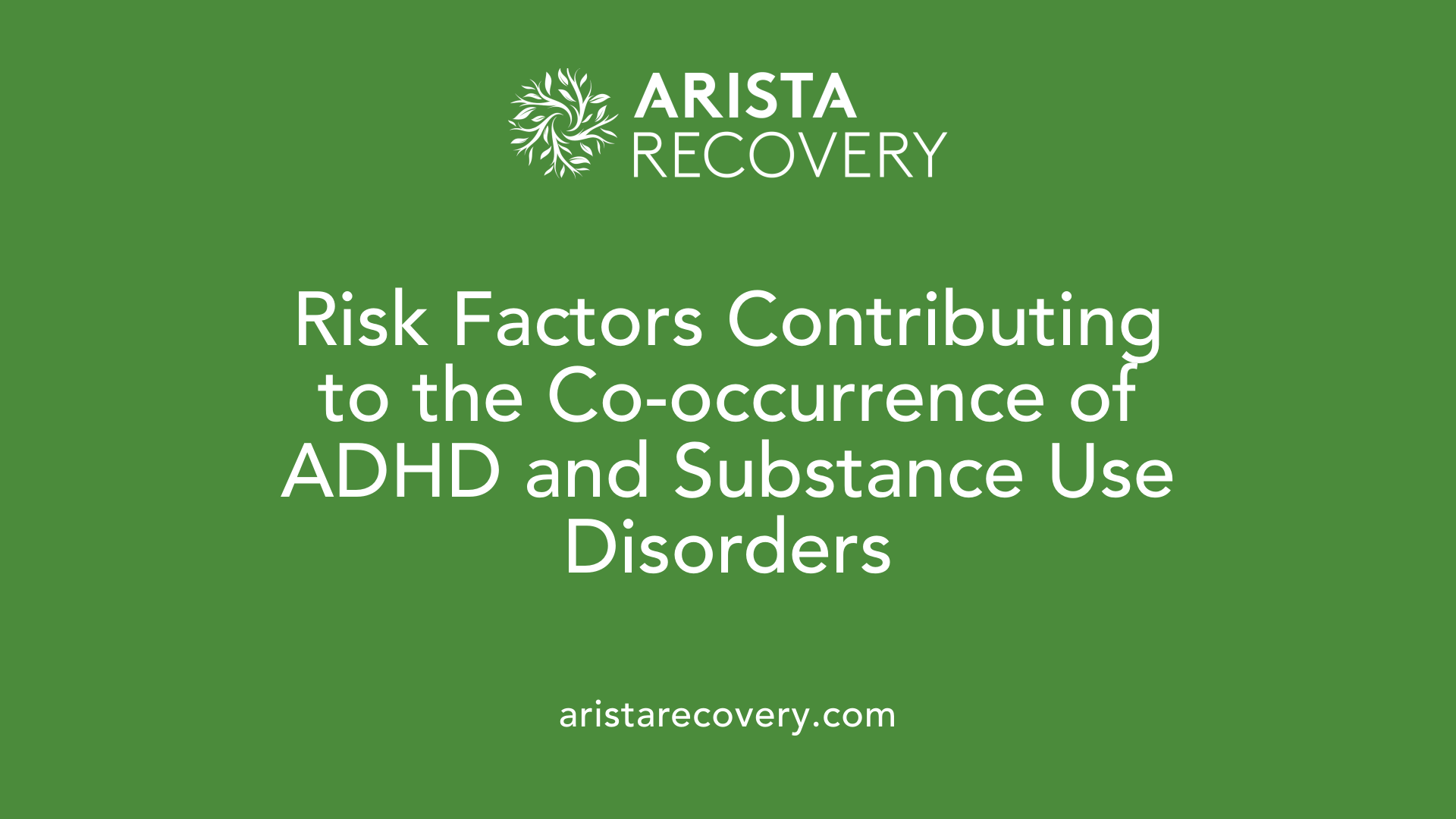
What are the risk factors and causes of co-occurring ADHD and addiction?
The relationship between ADHD and addiction is complex, involving various genetic, environmental, and psychological factors. Genetic predispositions play a significant role. Variations in genes related to dopamine pathways, such as the DRD2 gene, are often found in individuals with both conditions. These genetic factors can impair dopamine transmission, affecting brain circuits responsible for reward and impulse control.
Environmental influences further contribute to this overlap. Childhood trauma, neglect, or adverse prenatal exposures, such as maternal substance use, can disrupt brain development and increase vulnerability. Stressful life events, difficulties in school, and social challenges also raise the risk of substance experimentation among individuals with ADHD.
Traits like impulsivity, sensation-seeking, and low self-esteem are common psychological factors. These traits make individuals more prone to seek immediate rewards or stimulation, often turning to substances like alcohol, cannabis, nicotine, or stimulants as coping mechanisms. Self-medication is frequently observed, as individuals attempt to alleviate symptoms such as inattention, impulsivity, or mood instability.
Comorbid mental health conditions such as depression, anxiety, and conduct disorder further escalate the risk. These disorders can intensify emotional dysregulation and impulsivity, making substance use seem like a way to manage distress.
Research indicates that early initiation of substance use is more prevalent in those with untreated ADHD, emphasizing the importance of early diagnosis and treatment. Effective management with behavioral therapies and medications can substantially reduce the risk of developing subsequent addiction.
Understanding these interconnected factors underscores the importance of integrated treatment approaches. Addressing both ADHD symptoms and environmental or psychological influences is crucial to improve outcomes and prevent the escalation to substance use disorders.
Implications for Diagnosis and Treatment Strategies
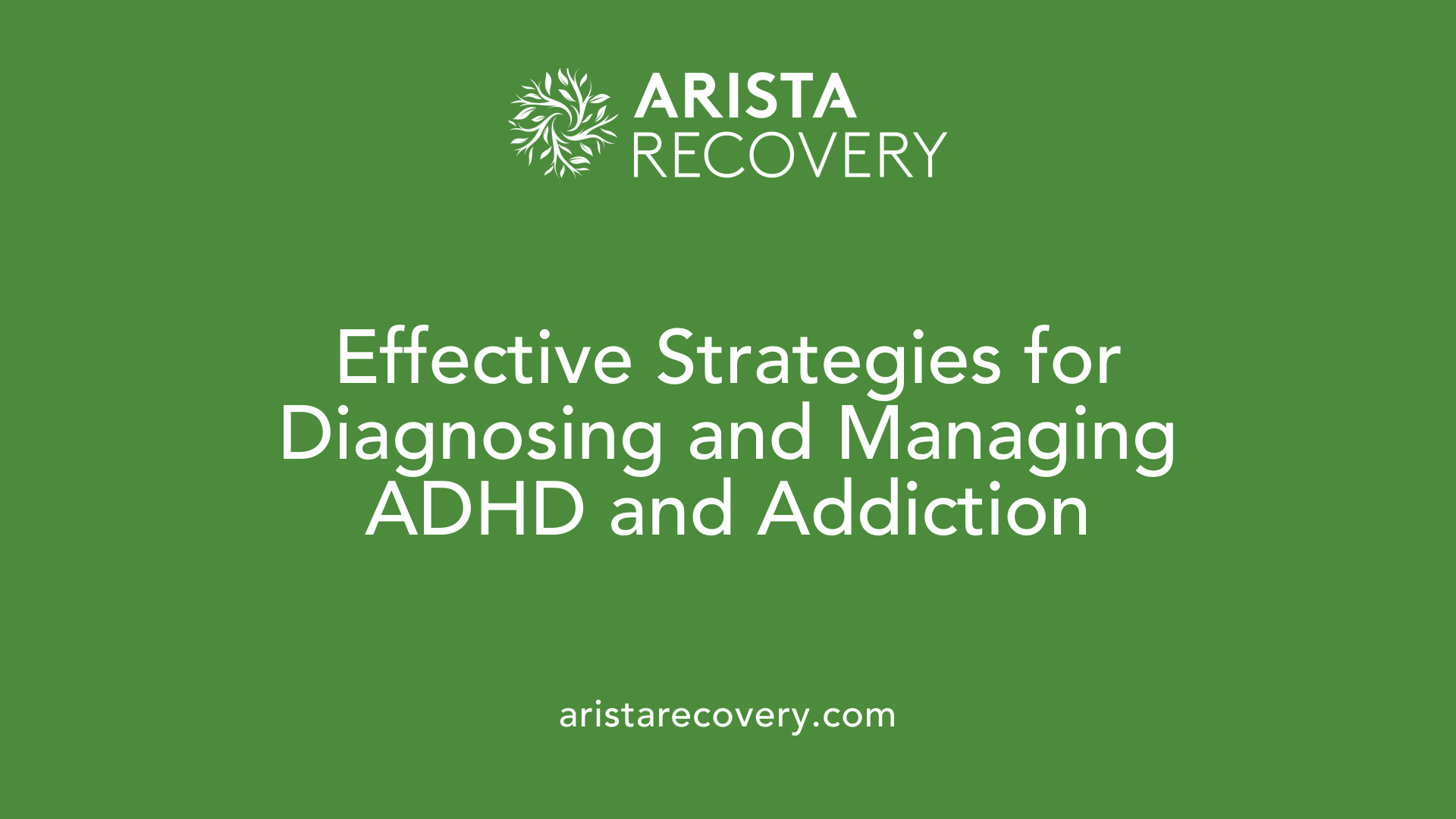
How does ADHD influence the likelihood of addiction and what are the implications for diagnosis and treatment?
ADHD notably elevates the risk of developing substance use disorders (SUD), with approximately 15-25% of adolescents and adults with ADHD experiencing SUD at some point. The core symptoms of ADHD—impulsivity and sensation seeking—coupled with neurobiological factors like altered dopamine transmission, predispose individuals to use substances as a form of self-medication or as a means to boost dopamine levels.
This connection has significant implications for diagnosis. When SUD co-occurs with ADHD, especially in adolescence or early adulthood, it can complicate accurate diagnosis because substance use can mask or mimic ADHD symptoms. Conversely, untreated ADHD may lead to higher engagement in risky behaviors, including drug or alcohol use, further entangling the diagnostic process.
Effective treatment requires a tailored, comprehensive approach. Medications like stimulants (e.g., methylphenidate, dextroamphetamine) and nonstimulants (e.g., atomoxetine) can alleviate ADHD symptoms and may even reduce the risk of subsequent substance use when carefully managed. However, these medications pose a potential misuse risk, particularly among individuals with a history of SUD.
Psychotherapy, especially cognitive-behavioral therapy (CBT), plays a crucial role in managing both conditions. CBT helps address impulsivity, improve coping skills, and modify risky behaviors, while psychoeducation fosters understanding of both ADHD and addiction. Support groups and family therapy can also bolster adherence and recovery.
An integrated treatment plan that simultaneously addresses ADHD symptoms and substance use, while considering medication risks and emphasizing behavioral interventions, offers the best prospects for long-term success. Early diagnosis and intervention are critical in mitigating the trajectory toward addiction and improving overall functioning.
In summary, understanding how ADHD influences addiction risk guides clinicians toward comprehensive strategies that improve diagnostic accuracy and foster effective, individualized treatment programs.
Medication Safety and Misuse Prevention in ADHD Treatment
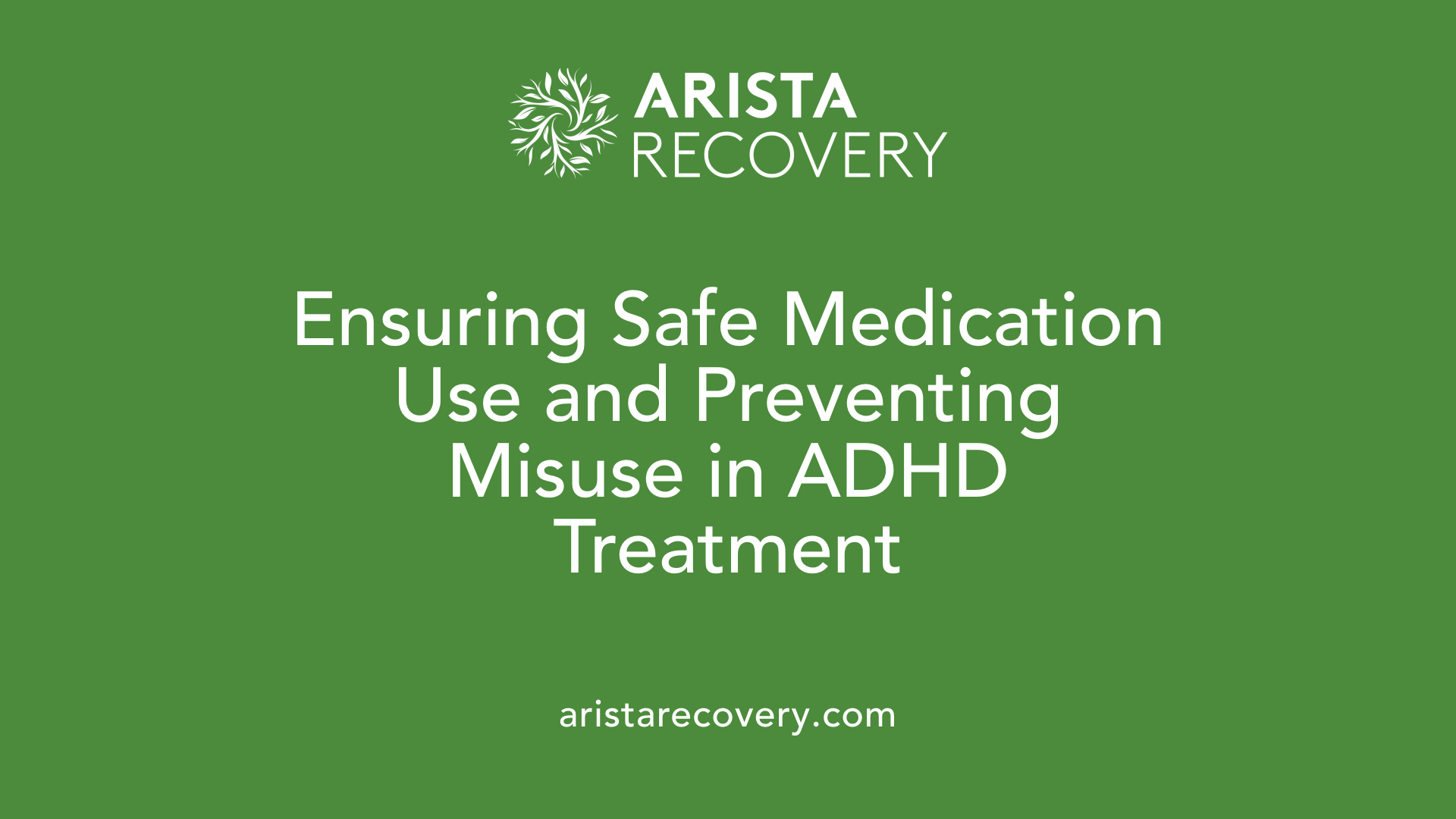
Can you get addicted to ADHD medication, and how does it relate to addiction risk?
While stimulant medications prescribed for ADHD, such as methylphenidate and amphetamines, do have the potential for misuse and recreational use, evidence suggests that when these medications are used correctly under medical supervision, the risk of developing addiction is generally low. Extensive research, including large-scale studies from countries like Sweden, has shown that early and appropriate treatment does not increase and may even reduce the likelihood of substance abuse later in life.
Children diagnosed with ADHD are indeed at a higher risk of developing substance use disorders (SUD), but this increased vulnerability is primarily associated with the disorder itself and environmental influences, rather than the medication used for treatment. Proper screening, regular follow-up, and careful monitoring by healthcare professionals are essential to prevent misuse, diversion, or dependency.
Risks and safeguards when prescribing stimulants
Stimulant medications are effective but require careful management. Physicians must evaluate the potential for misuse, particularly in adolescents and young adults who may have impulsivity traits. Safeguards such as controlled prescribing, regular assessments, and educating patients and families about correct use are critical. Extended-release formulations are often preferred because they lower the potential for abuse compared to immediate-release forms.
Nonstimulant alternatives like atomoxetine and bupropion
For individuals at higher risk of misuse or with comorbidities like substance use disorder, nonstimulant medications such as atomoxetine and bupropion are considered safer options. These medications have a lower abuse potential because they do not cause a stimulant effect that can produce euphoria. They also require less stringent control measures and can be used concurrently with therapy focusing on behavioral management.
Abuse potential and formulation differences
Different formulations of ADHD medications vary in their risk of misuse. Extended-release (ER) and long-acting formulations tend to have lower abuse potential because they produce a steadier drug level, reducing the euphoric
Current Research and Future Directions
What are current research findings on the overlap between ADHD and addiction?
Recent scientific studies emphasize a strong connection between ADHD and addiction, primarily through shared neurobiological mechanisms involving dopamine pathways in the brain. Both conditions involve dysfunctions in the mesolimbic and mesocortical circuits, which play crucial roles in reward processing and impulse control.
Neuroimaging research reveals structural and functional abnormalities in key areas such as the prefrontal cortex, nucleus accumbens, and other components related to decision-making and impulse regulation. These brain differences help explain why individuals with ADHD are more prone to addictive behaviors.
Genetics also contribute significantly. Variations in genes regulating dopaminergic transmission, especially those affecting dopamine receptors and transporters, increase vulnerability to both ADHD and substance use disorders (SUD). This genetic overlap supports the view that shared hereditary factors underlie the comorbidity.
Epidemiological data show that approximately 15-25% of adults with SUD also have an ADHD diagnosis, while children with ADHD are more likely to experiment with substances earlier. These patterns suggest that neurobiological and genetic factors predispose individuals with ADHD to seek out and develop substance use behaviors.
On the treatment front, research points to the potential of integrated approaches. Managing ADHD effectively, often through medications like stimulants or nonstimulants combined with behavioral therapies, may reduce the susceptibility to addiction. Emerging studies are exploring how early identification and intervention could serve as preventive measures, lowering the risk of subsequent substance dependency.
In summary, ongoing research continues to uncover the complex neurobiological linkages and genetic predispositions that connect ADHD with addiction. Advances in this area foster hope for targeted, personalized therapies designed to address both conditions simultaneously, ultimately improving patient outcomes.
Myths, Misconceptions, and Public Education
What myths and misconceptions exist about the relationship between ADHD and addiction?
There are several common myths surrounding the connection between ADHD and substance use disorders. A prevalent misconception is that all individuals with ADHD will inevitably develop addiction issues, which is not true. While having ADHD does increase the risk, many people with the disorder never encounter substance abuse problems.
Another widespread myth is that medication treatments for ADHD, especially stimulants, cause addiction. In reality, when these medications are prescribed and used properly under medical supervision, they do not heighten addiction risk. Some studies even suggest that appropriate ADHD treatment can lower the chances of developing substance use issues later in life.
Additionally, some people wrongly assume that ADHD symptoms are simply due to poor parenting or lack of willpower. However, ADHD is a neurobiological condition rooted in brain chemistry and genetics. Recognizing this helps reduce blame and stigma.
There’s also a misconception that ADHD primarily affects boys. In fact, girls are equally likely to have ADHD but are often underdiagnosed because their symptoms may differ or be less disruptive.
Public education plays a vital role in challenging these myths. Accurate information about ADHD and its relationship to addiction can foster understanding, reduce stigma, and encourage those affected to seek effective treatment. Dispelling misinformation helps promote supportive interventions that improve outcomes for individuals with ADHD.
Toward Better Outcomes in Managing ADHD and Addiction
Understanding the overlap between ADHD and addiction underscores the importance of early diagnosis, comprehensive treatment, and continuous education. Clarifying misconceptions, employing integrated therapeutic approaches, and fostering awareness can significantly improve prognosis and quality of life for affected individuals. Continued research will further elucidate shared pathways and inform advanced, personalized interventions, ultimately helping to reduce stigma and promote effective management of both conditions.
References
- The Intersection of Attention-deficit/Hyperactivity Disorder and ...
- The Complicated Relationship Between Attention Deficit ...
- ADHD and Addiction Explained
- When ADHD and Substance Use Disorders Coexist - CHADD
- The overlapping neurobiology of addiction and ADHD - OAText
- Intersection of ADHD & Addiction - First Step Men's Therapy
- Addiction and ADHD: Understanding the Link
- Understanding the Link Between ADHD and Addiction - Peace ...
- Substance Use Disorders and ADHD: Treating Addiction and ADD
You’re not alone in this.
When mental health challenges and addiction intersect, it can feel isolating. At Arista, we offer compassionate, evidence-based, and trauma-informed care to help you heal, grow, and move forward.
You’re not alone in this.
When mental health challenges and addiction intersect, it can feel isolating. At Arista, we offer compassionate, evidence-based, and trauma-informed care to help you heal, grow, and move forward.
Support that moves with you.
You’ve taken a brave first step. At Arista Recovery, we’re here to help you continue with best-in-class care designed for long-term healing and support.
.webp)






